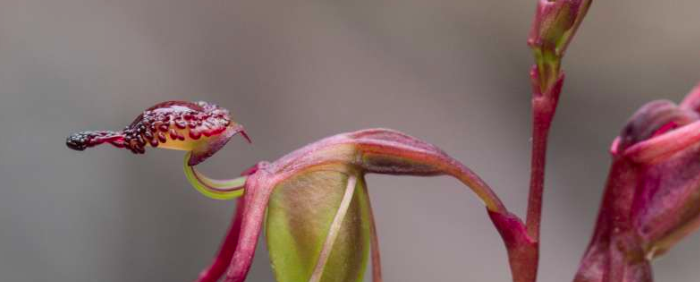
The color spots that humans do not see.
We enjoy looking at the shimmering colors of the flowers, but do you know that they sometimes have colors that we can not see?
We do not, but insects yes, since some perceive the ultra-violet , and not us. Some flowers have therefore taken advantage of this detail, with spots or lines, located in the center of the flower, close to the stamens and pistil, serving as a guide to insects to “land” on the flower as close to his meal. Insects often arise here: it is thanks to these visual guides – a bit like the lights of the runway at the airport! A flower with a purple spot in its heart will be more likely to be visited by an insect than a flower that does not have this dark central spot.
A real peep-show for browsers!
Some flowers push ingenuity to reproduce lures imitating pheromones, or even the shape of female insects , to attract males. This is particularly the case with Ophrys apifera – called orchid-bee – pollinated by a solitary bee it attracts by pheromones.
Then, as the lip of the flower resembles the female bee, the male then begins to copulate energeticallywith this natural inflatable doll, which allows the pollen of the orchid to settle on him. After a few moments of stupor, the insect, a bit of frustrated hair , goes in search of another flower of Ophrys, which it will pollinate again …
Attract insects, it’s good, brush them with pollen, it’s better!
The flower of this small Australian Orchid, Paracaleana minor , evokes a little duck in flight. The flower appears to consist only of a green and translucent cup containing the pollen assembled in pollinia, and at its base is the stigma. It emits odors that attract insects. But that’s not all … To ensure that it takes care of pollen before taking off, it has a Machiavellian plan !
When an insect lands, it activates a sore spot and in less than 1 / 10th of a second the insect is trapped ! He struggles and a few moments later, the trap reopens slowly. The insect escapes, the back loaded with pollen, to another flower …
Self-contraception.
Some plants can be cross-pollinated and self-pollinated, as we saw in the previous episode . But when it seeks to diversify its genes, a plant will sometimes flower successively, it will have to find a subterfuge to avoid pollinating itself!
Thus, Helosis cayennensis, an Amazonian undergrowth plant that lives at the expense of the trees it parasitizes, has no roots, no stems, no leaves but suckers that sink into the wood of its host and inflorescences. The inflorescence is covered with reddish bracts under which unisexual flowers develop.
When flowering, all the female flowers of the same inflorescence simultaneously display their white stigmas. Then the faded stigmata fall, and the male flowers blossom. Why is that ? Because thus, the male flowers can not pollinate the female flowers of the same subject. The pollen must be transported by an insect attracted by the nectar, to the flowers of another plant still in the female stage; fertilization can only occur between different individuals .
It is not at all to have seeds, it is necessary to know where to put them (a little like the suitcases). This will be the subject of our next article! Next time, we will see the treasures of imagination that plants have developed to effectively disseminate their seeds. It’s also incredible of inventiveness!